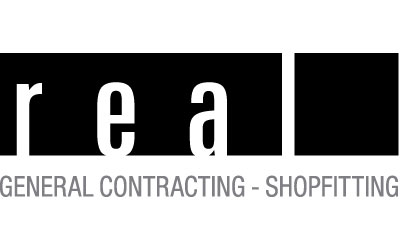The topic of sustainability now permeates all industries, including shopfitting. There is great potential here, because setting up a store is a major project with many environmentally friendly starting points. Read more about sustainability in shopfitting now!
A good example of sustainability in store design is provided by United Colors of Bennetton. For the design of a new store in Florence, Italy, the company used almost exclusively upcycled materials. For the floor, for example, they used reclaimed wood from beech trees that had not withstood a storm. The designers created the curtains of the changing rooms from leftovers from the textile industry, and in future river gravel will line parts of the checkout area. Of course, the fashion chain’s approach to sustainability goes far beyond furnishings. Clothing and accessories are now also made predominantly from recycled raw materials. This not only inspires a good feeling in the consumer. It also gives confidence in the ability to make a big contribution to environmental protection.
Just take a different approach
Ideas alone are often not enough to convince people to make store construction truly sustainable. Also important for the builders is the question of where to get the appropriate upcycling materials. Here, the industry is now a big step ahead. Some manufacturers have specialized in supplying precisely these materials. Some of them even have entire pieces of furniture in their range. This makes the job much easier overall, and it shows how important the industry’s advances are. Wherever products are not the exception but can mutate into mass-produced goods, this makes their use much easier and advances the realization that things can simply be done differently.
How does false wood react in shopfitting?
A good example of industrial manufacturing is Really, a Kvadrat subsidiary. With its “Solid Textile Boards”, the company shows that textile fabrics can be almost as robust as wood. In addition to mid-room furniture and checkout counters, the company also produces ceiling sculptures to add the finishing touches to individual furnishings. Thanks to flexible design options, virtually nothing is impossible here, and it can even be shaped thermally without great effort. Round shapes are therefore also no problem with this new material.
Industries are networking and thus reducing waste products
The fact that there is always overlap between different industries has long been no coincidence, but can be planned and desired. Why not turn old jeans into new shelves or curtains? In order to get hold of these new old raw materials, it is necessary for the individual companies to network well. This saves the one a lot of effort for recycling, the other the time-consuming search for suitable raw materials that are already there and do not have to be manufactured and delivered. A cycle is created of permanent use, so in fact in the truest sense of the word no thread is lost any more.
Sustainability in shopfitting from a single source
It’s great when all the elements for shopfitting really do come from a single source. But the industry is not quite there yet. The usual practice is to obtain the various materials, such as fabrics, woods, stones, etc., from different sources. This will remain the case for the time being. Nevertheless, it is important to realize that there are more and more innovations here, always due to the end customer’s demand to make a difference in terms of sustainability and to set a good example. For the environment, for the customer, and for a clear conscience. Sustainability is also expressed in the reflection of nature in the context of store fitting. Natural instead of artificial planting helps to create a green atmosphere in the true sense of the word. Smart irrigation systems are crucial here. These systems or watering computers not only relieve staff, they also do maximum justice to plants in the building in a reliable and well-dosed manner.
The example of the major fashion manufacturer shows that the sustainability approach to shopfitting can certainly work, with a little effort and ingenuity. The coming years will show what else is possible and what completely new manufacturing branches will result from the increasing demand in this segment. Until then, it’s a case of getting active yourself and keeping your eyes open, because there are plenty of alternatives to using the usual furnishing and design elements. And the results are convincing in any case, not only in terms of practicality of use in a wide variety of businesses, but also in terms of design.
Image copyright: leszekglasner




